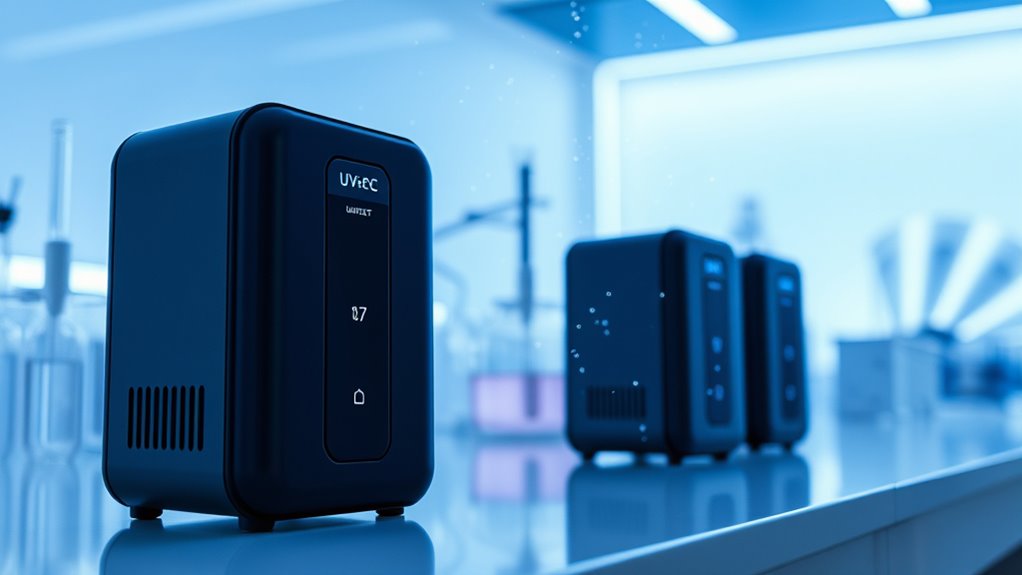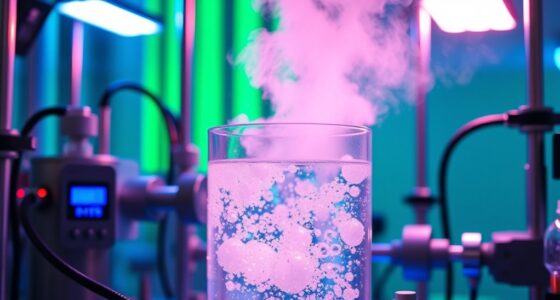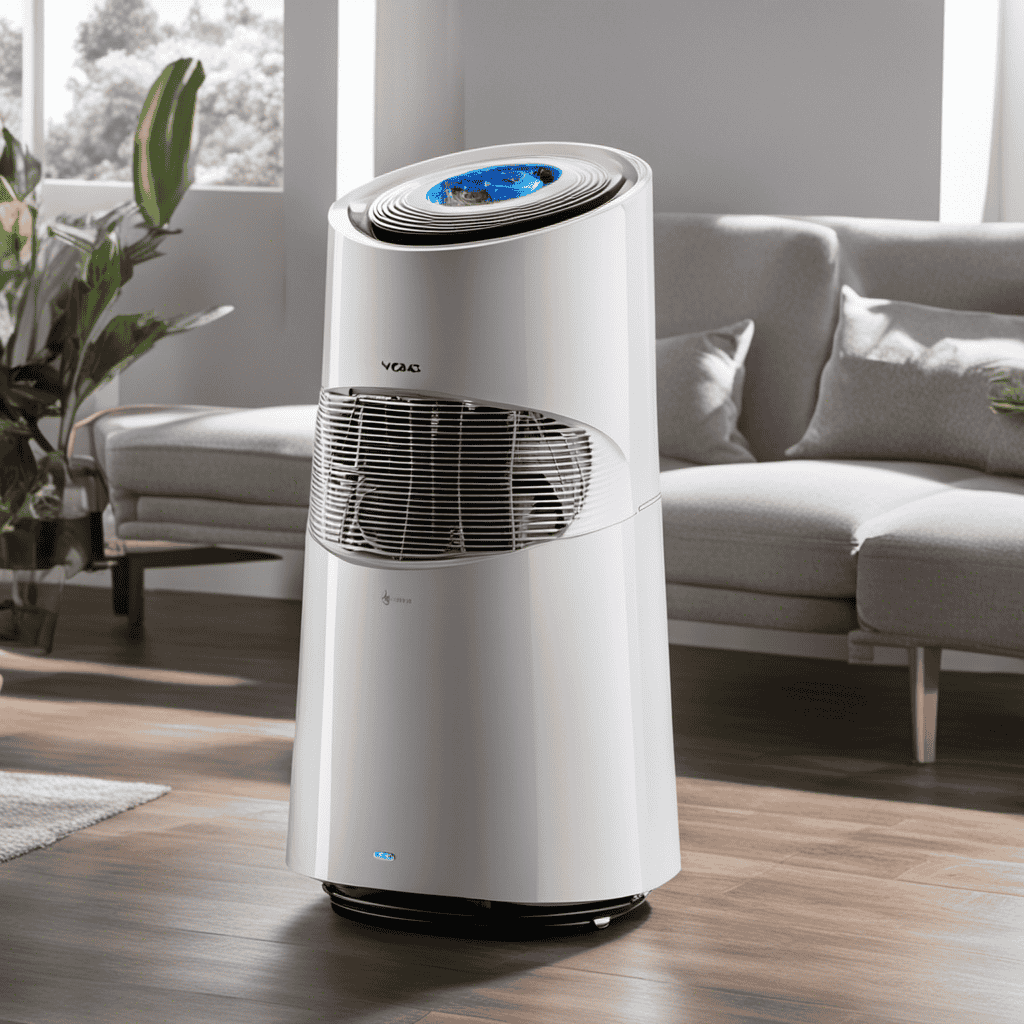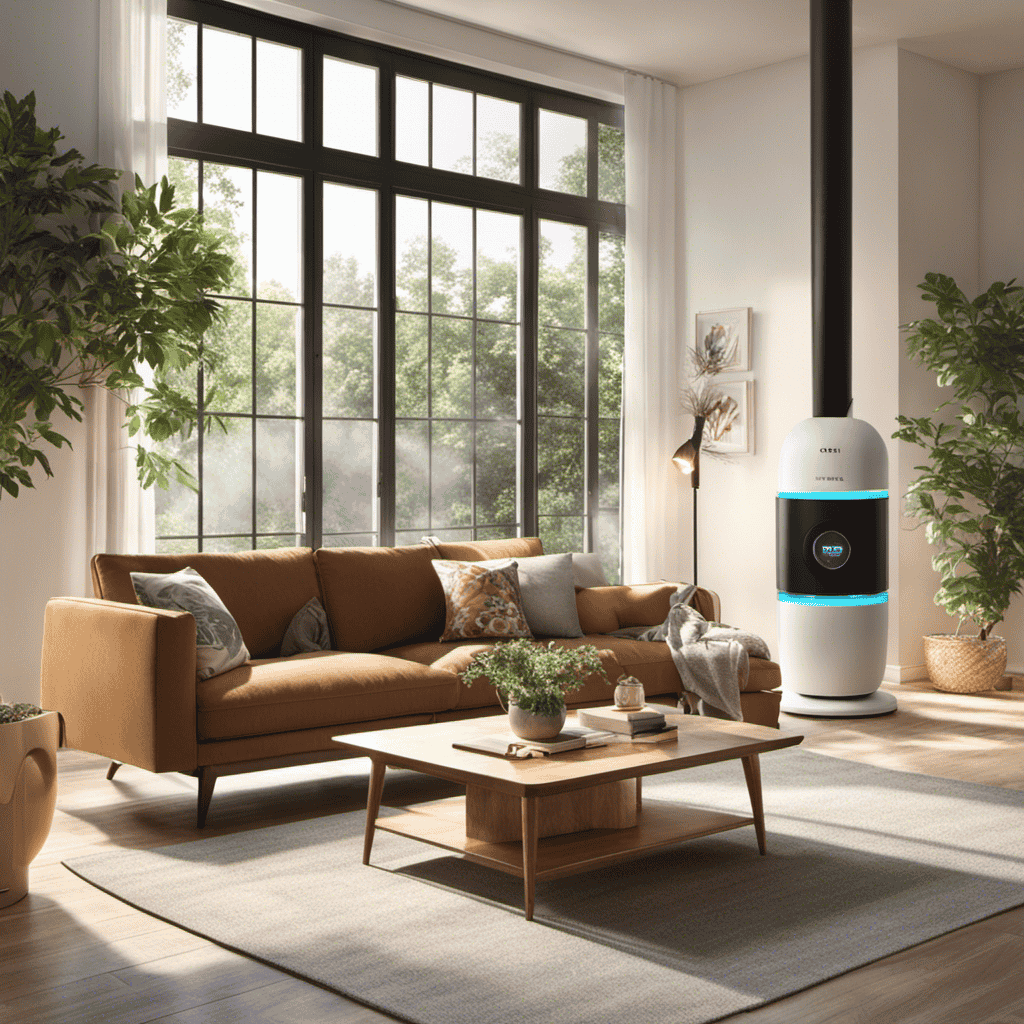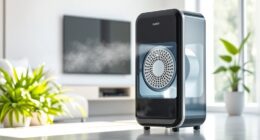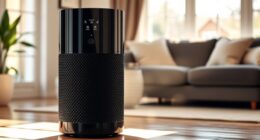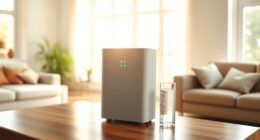Lab tests show that UV-C air sanitizers are highly effective at reducing airborne germs, often by over 99%. They inactivate pathogens like influenza, coronaviruses, and bacteria such as *Staphylococcus aureus* quickly. Safety features like shielding and automatic shut-offs make certain you stay protected while benefiting from powerful germ elimination. To understand how these devices work and what factors influence their performance, keep exploring the detailed results and safety measures they include.
Key Takeaways
- Lab tests show UV-C air sanitizers can inactivate over 99% of airborne pathogens like influenza and coronaviruses.
- Effectiveness depends on UV-C intensity, exposure time, airflow rate, and device design, as verified by lab results.
- Many devices include safety features such as shielding and automatic shut-off, confirmed through lab safety certifications.
- Proper containment and safety mechanisms prevent UV-C exposure risks to skin and eyes without compromising germicidal power.
- Lab data enables comparison of germicidal efficacy and safety features across different UV-C air sanitizer models.
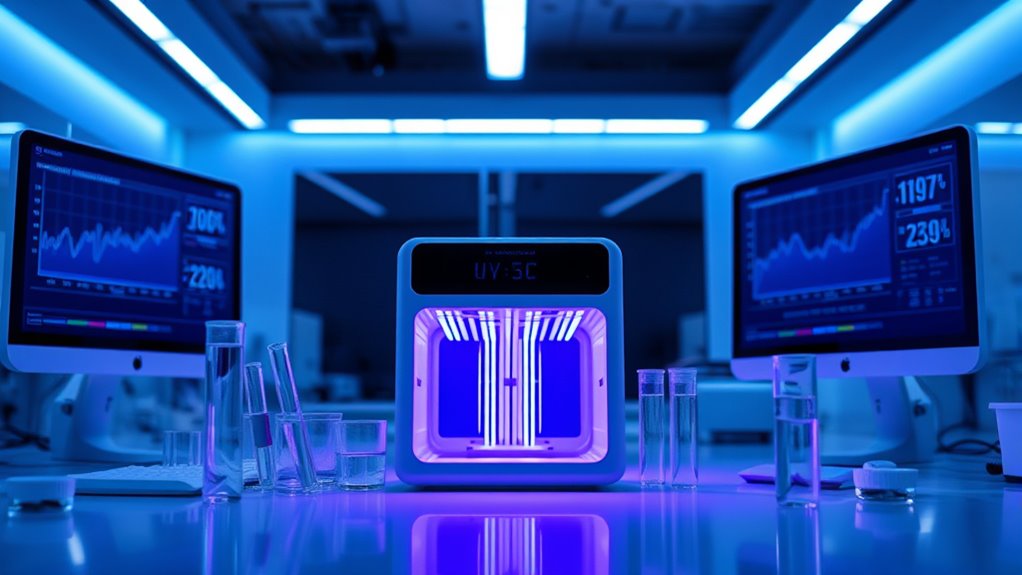
UV-C air sanitizers are innovative devices that use ultraviolet light to effectively neutralize airborne germs and viruses. When you look at lab test results, you’ll see that these devices are designed to deliver high germicidal efficacy, which means they considerably reduce the presence of harmful microorganisms in the air. Lab tests typically measure how well these sanitizers inactivate common pathogens like influenza, coronaviruses, and bacteria such as Staphylococcus aureus. The numbers are impressive—many models demonstrate over 99% germ reduction within minutes of operation. This level of effectiveness makes UV-C air sanitizers a compelling choice for improving indoor air quality, especially in crowded or poorly ventilated spaces.
However, as you’re considering adopting one of these devices, safety considerations should be a top priority. UV-C light, while excellent at killing germs, can also pose risks to your skin and eyes if not properly contained. Lab tests and safety certifications often highlight whether a device includes features like shielding or automatic shut-off when opened. These safety measures are essential because direct exposure to UV-C can cause skin burns or eye injuries. When reviewing lab results, it’s important to check that the sanitizer has passed safety standards and includes clear instructions for safe use. Many devices are designed with enclosed chambers or incorporate UV-C light within the unit, preventing accidental exposure. Such safety features give you peace of mind, knowing you’re protected while benefiting from the germicidal power of UV-C.
Lab testing also reveals that the effectiveness of UV-C air sanitizers depends on factors like the intensity of the UV-C light, the airflow rate, and the exposure time. Higher UV-C doses generally lead to better germicidal efficacy, but safety considerations must be balanced accordingly. A device with a high-intensity UV-C lamp that’s not properly shielded could be dangerous if mishandled. Manufacturers often publish detailed lab test results to demonstrate both efficacy and safety compliance, allowing you to compare different models confidently.
Frequently Asked Questions
How Long Does It Take to See Measurable Air Quality Improvements?
You might see measurable improvements in air quality within a few hours of using a UV-C air sanitizer. The air quality timeline varies depending on room size, air circulation, and pollution levels, but many users notice fresher air and reduced airborne pathogens quickly. Keep in mind, consistent use enhances results, and ongoing air quality monitoring can help you track progress toward cleaner, healthier indoor environments.
Are UV-C Air Sanitizers Safe for Children and Pets?
You wonder if UV-C air sanitizers are safe for children and pets. While they effectively reduce airborne germs, it’s crucial to take into account child safety and pet health. Many units have safety features like enclosed chambers that prevent direct exposure to UV-C light. Always follow manufacturer instructions, guarantee proper installation, and choose sanitizers with safety certifications to protect your loved ones from potential hazards.
Can UV-C Devices Eliminate All Airborne Pathogens Completely?
You might think UV-C devices eliminate all airborne pathogens, but their efficacy limitations mean they can’t do so completely. These devices can considerably reduce many airborne microbes, yet certain pathogens hide in areas the UV-C light can’t reach. Additionally, device safety is vital; improper use can pose risks to your health. So, while UV-C air sanitizers help, they shouldn’t be solely relied upon for total pathogen elimination.
How Often Should UV-C Air Sanitizer Bulbs Be Replaced?
You should replace your UV-C air sanitizer bulbs based on their lifespan, which typically ranges from 9 to 12 months. Regularly check the manufacturer’s recommended replacement schedule to guarantee maximum effectiveness. Over time, UV C bulb lifespan decreases, reducing germicidal power. To maintain air quality, set a reminder to change bulbs annually or when they show signs of diminished output, ensuring your device continues to sanitize effectively.
Do UV-C Air Purifiers Produce Ozone or Other Harmful Byproducts?
You might think UV-C air purifiers could produce harmful byproducts, but most models are designed to minimize ozone generation and avoid harmful byproducts. Coincidentally, many devices use special filters to keep ozone emissions low. While some older or poorly maintained units might generate small amounts of ozone, modern UV-C air purifiers typically operate safely, ensuring you breathe clean air without risking exposure to harmful byproducts.
Conclusion
While UV-C air sanitizers effectively reduce airborne germs, some worry about safety or incomplete sterilization. Rest assured, modern units are designed with safety features to prevent UV exposure. Keep in mind, no sanitizer is perfect, but when used properly, UV-C devices considerably improve air quality. They’re a valuable addition, especially in crowded or high-risk spaces. Ultimately, combining these with good ventilation offers the best protection against airborne pathogens—making your environment safer and healthier.
